Radium Infrared lamps


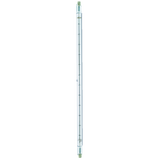
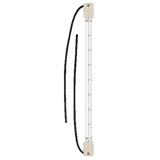

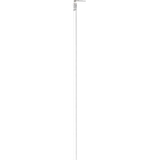
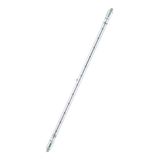
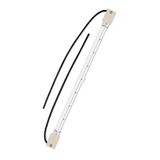

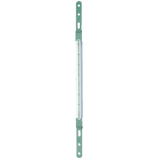
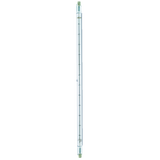
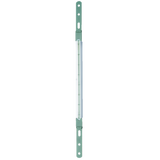




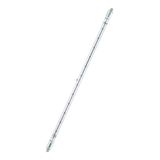



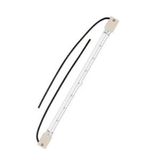
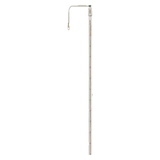
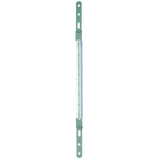
radium ir lamps introduction and brand context
Radium manufactures infrared sources for two distinct tasks: fast thermal processing on production lines and controlled invisible illumination for cameras and sensors. In practice that means short‑wave quartz halogen tubes for rapid heat transfer, medium‑wave ceramic/quartz panels for gentler, deeper heating, and specialized NIR emitters for inspection and machine vision.
radium infrared lamps product range and series overview
Short‑wave (NIR ~0.78–1.4 µm) quartz halogen tubes — single or twin‑tube with clear or gold‑reflector geometry. Typical ratings 1–6 kW per tube at 230/400 V, linear lengths 300–1500 mm with axial or side terminals. Rise time ~<1 s; high power density for paint/powder curing, PET preforms, and thermoforming.
Medium‑wave (1.4–3 µm) quartz and ceramic emitters — 250–2000 W elements for materials with slower thermal response (wood veneers, textiles, adhesives). Softer heating profile and improved penetration for moisture removal and drying.
Far‑infrared (3–10 µm) ceramic panels — 150–1000 W tiles for low‑temperature processes, shrink tunnels, and comfort/warming zones.
NIR illumination modules for imaging — narrowband 850/940 nm with controlled beam patterns; used for surveillance, barcode/vision stations where visible light is undesirable.
Cut lengths, connector types, and reflector choices (gold/dichroic) are selected per process and mechanical envelope. Where retrofit speed matters, spec tubes that match existing center‑to‑center distances and terminal style.
radium ir emitters technical specifications and standards
- Electrical: mains operation 230/240 V single‑phase and 400 V three‑phase options; dimming/drive via SCR/thyristor or solid‑state relays with burst‑fire/phase‑angle control. Power regulation bands typically 10–100%.
- Optical/thermal: spectral peaks by type (short‑wave ≈1.1 µm, medium‑wave ≈2–2.5 µm). Gold reflectors lift forward irradiance +15–30% and shield back‑heat into housings.
- Lifetime: quartz halogen SWIR typically ≈5,000 h at rated voltage; medium‑wave ceramic ≈10,000 h. Voltage overshoot shortens life — specify soft‑start where cycles are frequent.
- Mechanical: tube diameters common 10–23 mm; linear tolerances support modular arrays. Terminals spade/ceramic block with braided tails for thermal relief.
- Safety & EMC: photobiological assessment under EN/IEC 62471; electrical construction per EN/IEC 60598‑1 when built as a luminaire assembly. Control gear EMC per EN 61000 series. Temperature controls via thermocouples/RTDs recommended to prevent substrate scorching.
- Environment: emitters are generally IP20; install in housings/fixtures to achieve IP54–IP65 where dust or wash‑down is present. Operating ambient typically −20…+40 °C around fixtures; element surface far higher by design.
radium infrared lighting applications and compatibility
- Industrial process: powder/paint curing, gel and adhesive activation, PET reheat, blister and thermoforming, laminating, drying lines. Short‑wave halves warm‑up time and boosts line speed; medium‑wave helps where penetration and gentler profiles avoid warping.
- Packaging & food: heat‑shrink tunnels, surface browning/holding with far‑IR panels (use housings with food‑safe finishes, correct clearances).
- Vision and security: 850/940 nm sources for cameras in logistics cells and perimeter systems; pair with lenses/filters tuned to wavelength.
Emitters align with standard mounting profiles and Radium housings; electrical interfaces support SCR control cabinets and PLC‑triggered SSR banks for modular zoning.
radium ir heat lamps integration with other Radium products
Combine emitters with Radium aluminum profiles, reflectors, and brackets that set standoff, angle, and cooling airflow. For control, pair with Radium power controllers (thyristor) or relay stacks sized to inrush and duty cycle, plus type‑K thermocouples/RTDs tied to PID temperature loops. Where the same line needs accent light, add Radium linear luminaires with separate ELV control to keep EMI isolated from heater switching.
For housings requiring ingress protection, use Radium fixture bodies with IP54–IP65 sealing and cable entries sized to M16–M25; bond all metalwork for safety and EMI stability.
radium ir led lamps selection criteria for B2B clients
- Process & spectrum — choose short‑wave for rapid surface heating and PET; medium‑wave for drying and deeper heat; far‑IR for shrink/comfort. For imaging, pick 850/940 nm narrowband.
- Power density & coverage — match kW/m and reflector geometry to conveyor speed and target distance; design arrays for uniformity without hotspots.
- Control strategy — phase‑angle for smooth regulation, burst‑fire for thermal mass; add soft‑start to extend tube life in frequent cycling.
- Mechanical fit — confirm tube length, terminal type, and standoff; allow for expansion and service access.
- Environment & IP — open elements in clean/dry zones, housed emitters for dust and wash‑down; select fixture IP to site.
Procurement typically standardizes one SWIR tube family, one M‑wave ceramic line, and a narrowband NIR illuminator for cameras to keep spares lean while covering most stations.
Advantages of working with Bankoflamps
Commercial terms match your bill of materials: individual B2B pricing and formal offers, a dedicated account manager, and live stock visibility across EU warehouses. Quotes usually land in about an hour. Orders submit by EAN/MPN with clean traceability, and price lists are downloadable and kept current. You also get lead‑time tracking and order‑status updates, purchase‑history analytics to consolidate SKUs, and post‑payment up to 30 days for trusted clients. We plan consolidated shipments to lower freight costs, keep pricing stable with validity dates, and support teams in France, the Baltics, Germany, Spain, Italy, Belgium, and the Netherlands.